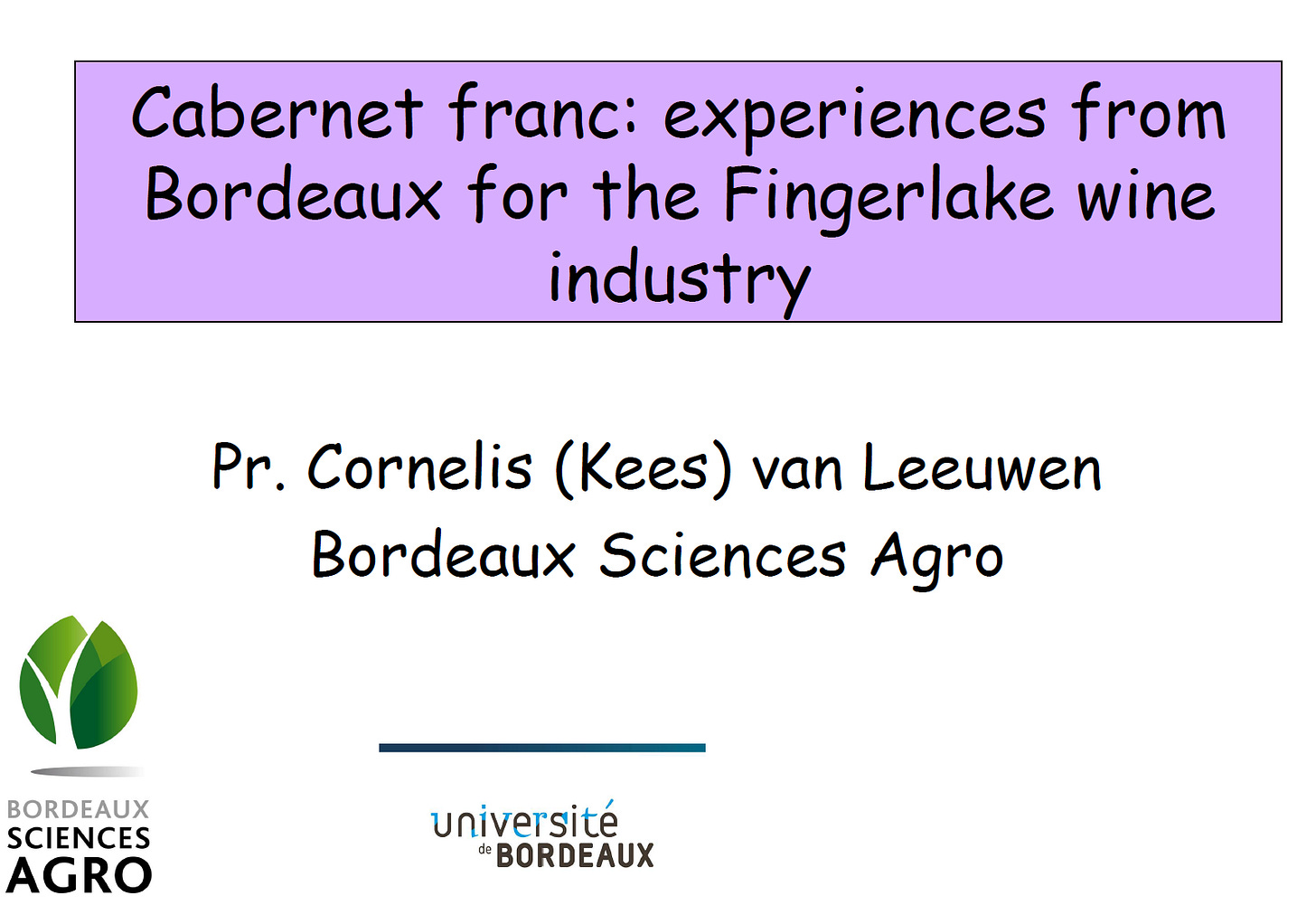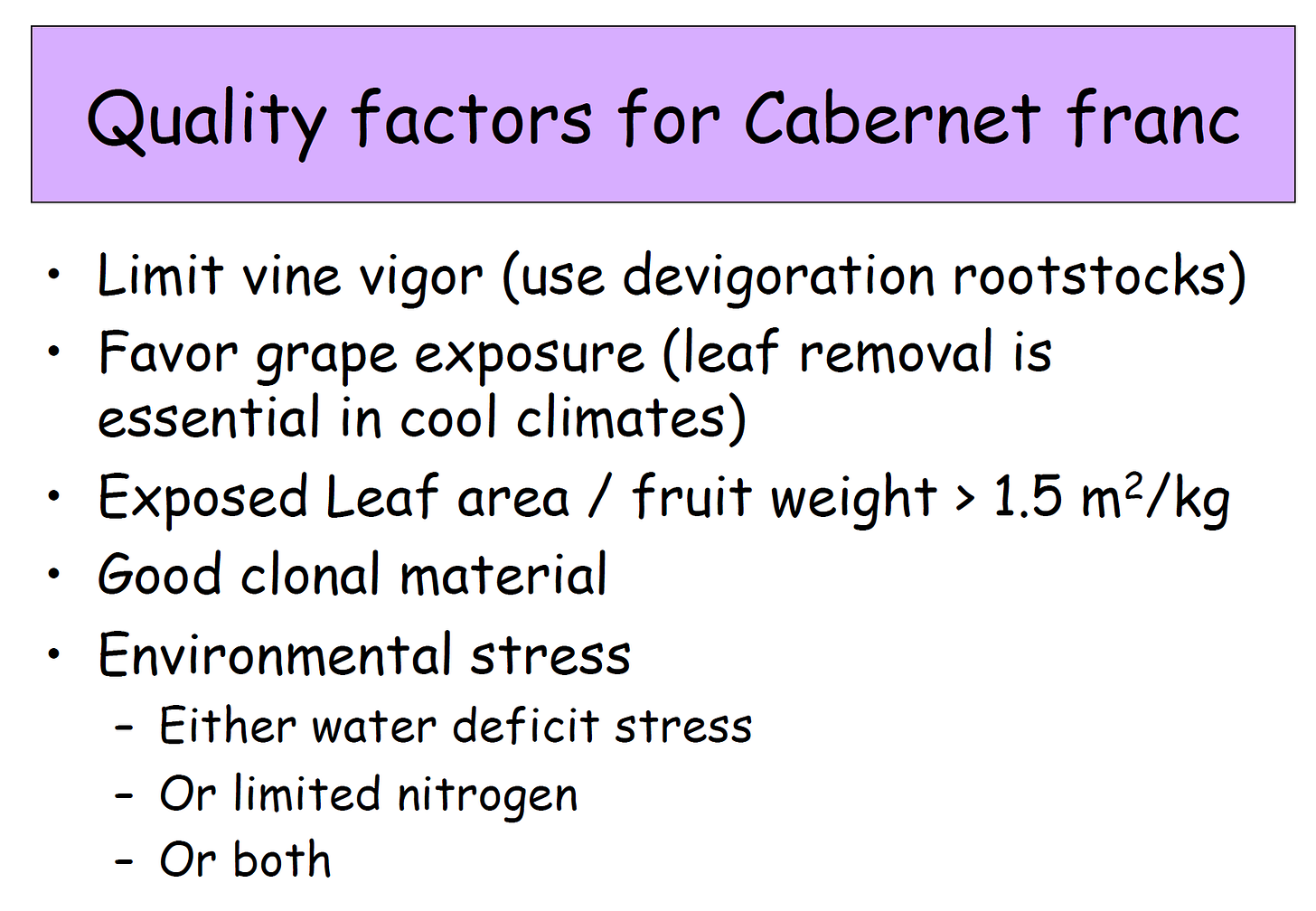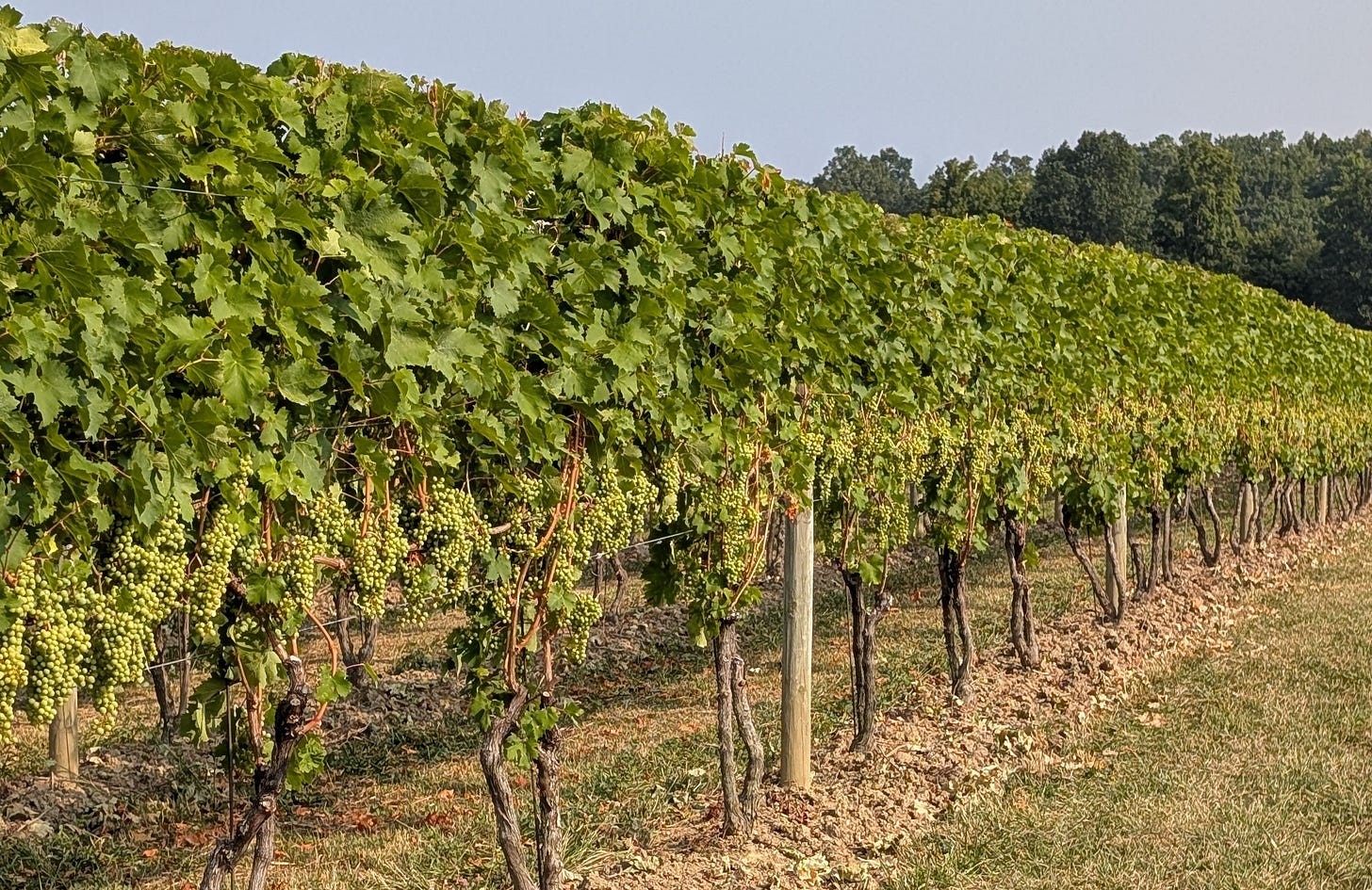#146 What We Do to Make Wine in the Vineyard
In our climate, maximum sun exposure means riper fruit and more flavor in the wine.
This week, we have removed the leaves that would normally shade these Cab Franc grapes. Maximum sunlight not only leads to better ripening, but it also suppresses the “green bell pepper” flavors often found in Cabernet Franc.
Around 2014, the vineyard manager from one of the most famous vineyards in France, Chateau Cheval Blanc, came to speak at Cornell University about Cabernet Franc. Cheval Blanc makes an iconic Bordeaux blend, which is approximately 55-60 percent Merlot and 40-45 percent Cabernet Franc. If you would like to buy a bottle of Cheval Blanc, be prepared for some sticker shock.
The vineyard manager, Cornelis (Kees) Van Leeuwen, gave a presentation that provided a comprehensive overview of how they have come to understand the Cabernet Franc grapes, its different clones, and the its response to different soil types and climatic conditions. He gave this presentation at a time when many of us in the Finger Lakes were hoping to learn as much as possible about growing Cab Franc successfully. This was (for me, at least) an unforgettable tutorial from one of the finest vineyards in the world.
Zooming outward from the previous picture which was a close-up of a Cab Franc cluster, we can see how the vine has been trellised to enable us to expose the clusters by removing leaves in the “fruit zone,” or the area where the clusters are concentrated. There is still plenty of leaf area to support the fruit.
Kess Van Leeuwin’s presentation was 37 pages long and transparent in almost every manner. At the end, he summarized in the following way.
Each of these five bulleted items is generally under our control. None of our Cab Franc vines are overly vigorous, due, we think, to our soil type and root-stock. We remove leaves twice during the season; we use a mechanical leaf remover after the berries have just formed and are green and durable. Later in the season we do a leaf removal by hand, because the mechanical leaf remover would damage the maturing berries.
We do not have much control over “water deficit stress.” We do not irrigate, but we can get too much rain sometimes. That is why have installed extensive drainage tile under the vineyard. Some years we see very little rain, which creates “water deficit stress: naturally. We experienced this to some extent in July-August, 2024, and we are seeing it now in 2025. We are approaching drought conditions here in early August.
A row of Cab Franc with the leaves just removed. You can see them on the ground beneath the vines. This is the final leaf-removal for the season.
August has been very dry, and the forecast for the next two weeks is more of the same. This bodes well, generally, as long as some rain eventually falls. It always does.








I expect the Prof's "Quallity Factors" would apply in a general sense to cabernet sauvignon. Am I on the right track?
I hope you geeked out the way I geek out talking to another winemaker. I am always impressed by the neatness of your vines. You have some mad grape growing skills and the old adage definitely hold true: 90% of winemaking is done in the vineyard. You can make bad wine from excellent grapes but you cant make excellent wine from bad grapes. From what I see your grapes are among the best out there.